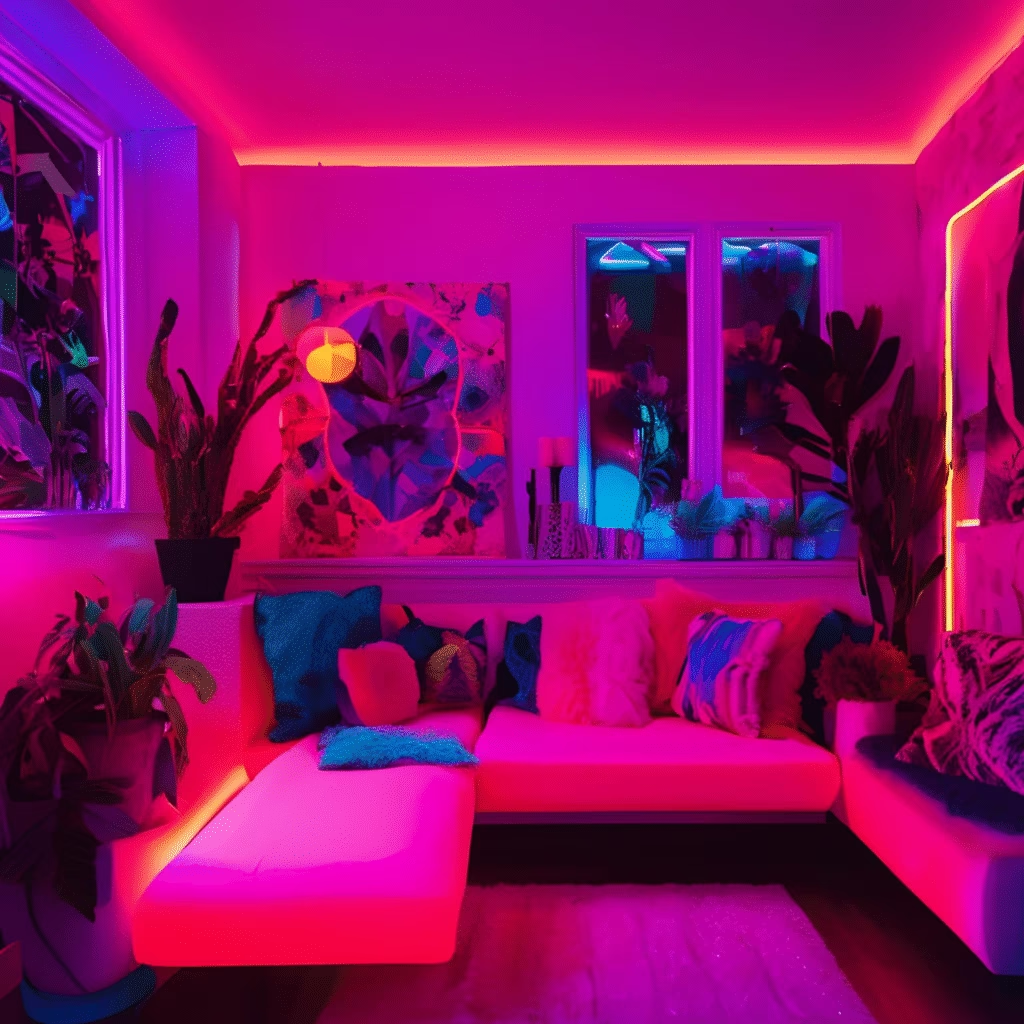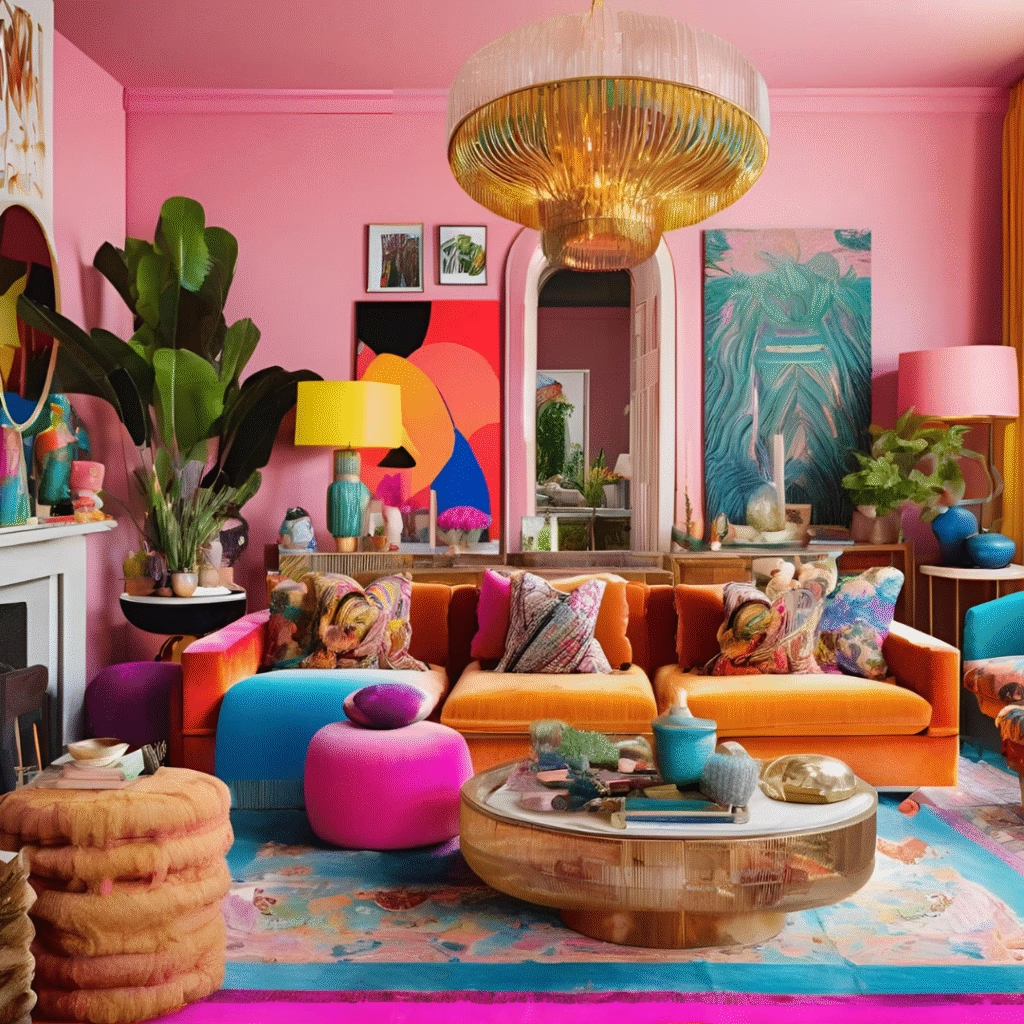Table of Contents
Introduction
Thanks in great part to its simple look and emphasis on comfort, Scandinavian interior design has become rather popular. Originally from the Nordic nations Denmark, Norway, Sweden, Finland, and Iceland this design philosophy blends a warm, inviting ambiance with a neat, uncluttered appearance. Whether you live in a house, enjoy interior design, or blog about lifestyle, this book will enable you to use Scandinavian interior design ideas to create a calm and fashionable home.
What is Scandinavian Interior Design?
The “less is more” philosophy underlie Scandinavian home design. To mirror the Nordic way of life and culture, it stresses simple forms, neutral color pallets, and natural materials. Comfort, pragmatism, and well-being define this design approach, thereby creating a harmonic setting that advances peace and simplicity.
Key Elements of Scandinavian Interior Design
1. Neutral Color Palette
Scandinavian interior design is distinguished in part by its neutral color palette. A peaceful backdrop created by soft whites, grays, and earthy tones let’s natural light accentuate the room. Though textiles and décor allow sporadic flashes of color, these subdued tones predominate. This careful mix creates a calm and roomy space.
Creating a Calming Backdrop
Neutral colors reflect light and give the room airy, so preserving a serene atmosphere. They provide a canvas for other design components, therefore improving the whole look.
Allowing Natural Light
Scandinavian interior design depends much on natural light. Maximize light flow by using translucent curtains and big windows, therefore enhancing the openness and inviting nature of your house.
Adding Pops of Color
Although neutrals are important, cushions, rugs, or artwork can be used to enhance visual interest without dominating the space by including little bursts of color.
Learn More about Luxury Interior Design ideas 2024: Elevate Your Elegance
2. Natural Materials
Natural materials are much stressed in Scandinavian interior design. The main component is wood; furniture and floors often employ light-colored woods such ash, pine, and birch. These materials not only provide coziness but also link inside environments to the outside. Natural fiber textiles include wool, cotton, and linen improve comfort and texture.
Importance of Wood
Wooden components give a friendly and inviting impression. They also bring a little bit of nature, which is a fundamental idea of Scandinavian design.
Connecting Indoor and Outdoor Spaces
Using natural materials can help you to smoothly combine your indoor and outdoor spaces, therefore producing a harmonic appearance.
Natural Fiber Textiles
To provide your room warmth and texture, include wool, cotton, and linen textiles. These natural fibers accentuate the coziness and balance the wooden components.
3. Functional Furniture
Scandinavian interior design revolves mostly on functionality. Furniture pieces maximize space and are multifarious in use. Seek for elegant, useful solutions that give comfort first priority without compromising flair. Usually with simple shapes and clean lines, Scandinavian furniture is flexible and easy to fit into many different décor schemes.
Multi-Functional Furniture
Select pieces with several uses, such a sofa bed or a coffee table with storage. This optimizes your space and maintains the order in your house.
Sleek and Practical Designs
Choose furniture with both form and purpose. Scandinavian furniture is renowned for its elegant designs that never sacrifice comfort.
Versatile and Simple Shapes
Simple, neat lines enable Scandinavian furniture to fit any decorating scheme. This adaptability lets you glance coherently all over your house.
4. Minimalist Aesthetic
Scandinavian homes demand a simple aesthetic. Pay close attention to key components that support the general space’s overall functioning. Sort your house by cutting out extraneous objects and choosing well-considered furniture. Whether ornamental or utilitarian, every object should have a use.
Achieving a Clutter-Free Environment
Minimize clutter to keep your area neat and orderly. This generates peace and relaxation.
Essential Elements
Select pieces with both beauty and utility. This guarantees that every item in your house accentuates your surroundings.
Meaningful Décor
Choose accent pieces that speak to you. Personal touches help your house to reflect your own style and set it apart.
5. Cozy Textiles
A nice and welcoming environment is much enhanced by textiles. Create comfy lounging areas with layer soft blankets, fluffy rugs, and cozy cushions. To keep the minimalist look while adding visual interest, choose basic, subdued patterns.
Enhancing Warmth and Comfort
Soft fabrics make your room cozy and warm. Create welcoming seating sections with cushions and rugs.
Layering for Visual Interest
Layer several fabrics to produce texture and depth. Without crowding the area, this adds visual appeal.
Simple Patterns
Choose geometric designs or subdued motifs like stripes. These preserve the simple style by adding visual appeal.
6. Emphasis on Light
Scandinavian design depends much on natural light. Commonly found large windows let as much light in as possible. To accentuate this impact, use light window treatments like sheer curtains. Use warm artificial lighting—lamps and sconces—in the absence of natural light to create a comfortable atmosphere.
Maximizing Natural Light
Big windows and transparent drapes let natural light permeate your room, creating an airy, open impression.
Warm Artificial Lighting
Warm lighting will help to create a comfortable environment. Your space will have a gentle glow from lamps and sconces.
Creating a Cozy Ambiance
Combine artificial and natural light to produce a cozy space. This makes your house more comfortable generally.
Tips for Achieving Scandinavian Interior Design
Incorporate Nature
Add plants or natural décor accents to bring the outside inside. Houseplants brighten your room and help to clean the air
Adding Plants
Apart from cleaning the air, houseplants give your house life and color. Select low-maintenance plants to simplify your care.
Natural Décor Elements
Add natural features such stone sculptures or wooden bowls. These provide your space interest and texture.
Enhancing Connection to Nature
Natural décor accents help your indoor and outdoor surroundings to be more connected. This improves the whole harmony in your house.
Invest in Quality
Select ageless, lasting, excellent works of art. Scandinavian design stresses longevity and workmanship, thus make less but better purchases of objects that will last.
Durable Pieces
Choose furniture and décor meant for lifetime. Superior parts guarantee durability and long-term pleasure.
Timeless Design
Pick timelessly designed objects. This guarantees that throughout time your décor stays relevant and fashionable.
Craftsmanship and Longevity
Make investments in works displaying extraordinary skill. This beautifies your house and adds value.
Layer Textures
Combining several textures will help your environment to have depth. Combining soft fabrics with smooth surfaces will provide visual appeal while also preserving a comfortable environment.
Combining Smooth and Soft Textures
Combine soft materials like wool or cotton with smooth surfaces like stone or wood. This seems balanced and inviting.
Adding Depth
Laying textures gives your scene dimension and depth. This improves the whole comfort and appearance.
Maintaining a Cozy Atmosphere
Make sure your layered textures add to a warm surroundings. This makes your house more warm and comfortable generally
Create a Sense of Balance
Share visual weight equally to achieve harmony in your décor. Create harmony across the room using symmetry and proportion.
Distributing Visual Weight
Make sure your décor items are spread fairly. This gives the appearance balanced and harmonic.
Using Symmetry
Use symmetrical configurations to improve equilibrium. This gives your area structure and organization.
Achieving Harmony
Harmonious surroundings are created in part by balance and symmetry. This improves the whole comfort and appearance of your house.
Personal Touches
Though simplicity is important, remember to let your own style show in the design. To make the place especially yours, use artwork, pictures, or meaningful objects.
Reflecting Your Personality
Select accent pieces that speak to you. Personal touches help your house to reflect your own uniqueness.
Adding Artwork and Photographs
Add images and artwork you enjoy. This gives your area personal meaning and color.
Infusing Sentimental Value
Add things of sentimental worth. This lends warmth and inviting quality to your house.
Conclusion
Scandinavian interior design is all on building a comfortable, useful, and aesthetically beautiful surroundings. Embracing a neutral color palette, natural materials, and simple ideas will help you create a calm environment that advances comfort and well-being. Including these Scandinavian design principles will help you create a fashionable and pleasant environment whether your house is being totally rebuilt or only you want a few tweaks. Starting your road towards a Scandinavian-inspired house right now will help you to appreciate the peace it offers!
Learn More: Click Here
FAQs
Which main components define Scandinavian interior design?
Simple, functional, and natural element-based Scandinavian interior design emphasizes Important components are a neutral color palette, simple designs, the use of natural materials like stone and wood, lots of natural light, and comfortable fabrics.
How can I affordably design a house with a Scandinavian interior design influence?
Initially, concentrate on organizing and streamlining your surroundings. Make a few important investments in some classic, excellent furnishings. Add natural accents like houseplants and select neutral-colored, reasonably priced décor pieces. Additionally excellent sources for Scandinavian-style items are do-it-yourself projects and second-hand stores.
Are strong colors let into Scandinavian interior design?
Though Scandinavian interior design usually stresses neutral tones, you can use strong colors occasionally. To add a splash of color without overpowering the room, think about utilizing strong colors as accent colors like cushions, artwork, or little décor pieces.
How can I maintain my minimalist environment feeling simple yet make it cozy?
Layer several textures and soft fabrics like pillows and shawls to establish a warm minimalist room. Use soft lighting and include plants and wood among other natural materials. Personal touches—such as artwork or emotional objects—can help give your room warmth and charm.
Can I combine Scandinavian interior design with other styles?
True! Flexible and easily combined with different styles such as modern, industrial, or bohemian, Scandinavian interior design is. Maintaining the basic ideas of simplicity, utility, and natural materials, try for balance by including subdued components from other styles.

